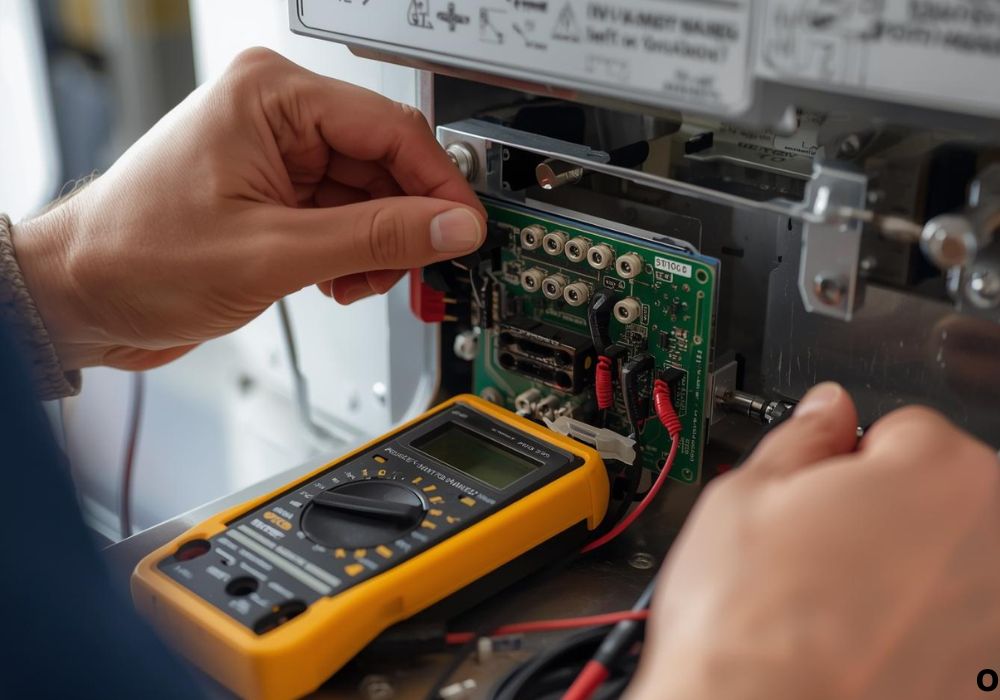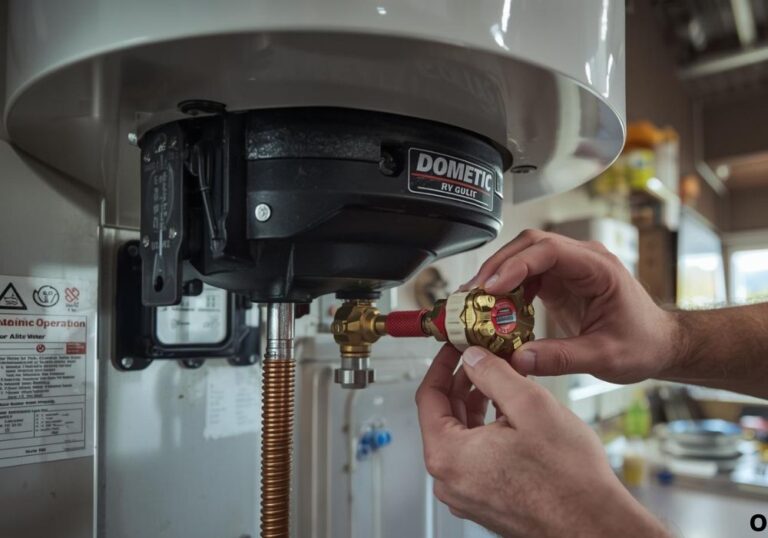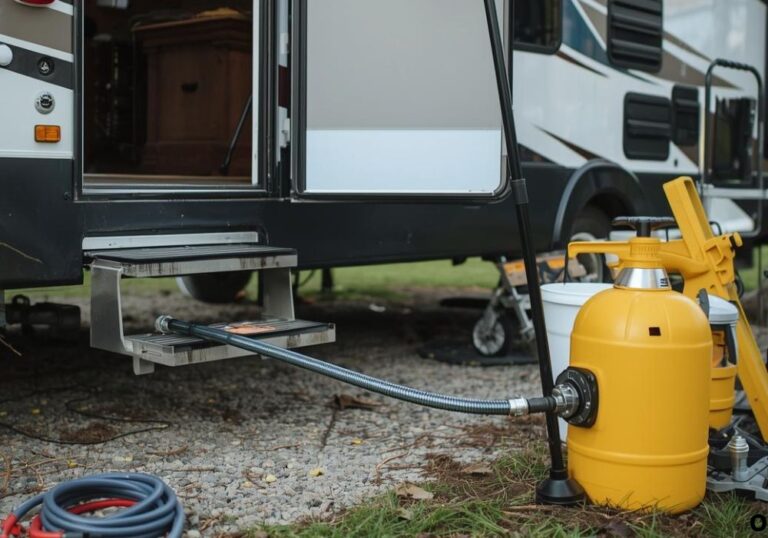DIY Guide: Test RV Water Heater Circuit Board Safely
You step into your RV after a long trip, expecting a hot shower, but your water heater is acting inconsistently. Sometimes the water heats slowly, sometimes it doesn’t heat at all, and the digital display or indicators are unresponsive.
The circuit board in your RV water heater acts as the central control unit. It regulates power distribution, controls the igniter, heating elements, and ensures the water reaches the desired temperature safely.
A malfunctioning circuit board can cause the water heater to fail, trip breakers, or even damage connected electrical components. Ignoring early signs may lead to costly repairs or safety hazards.
Fortunately, testing the circuit board is a manageable DIY task when approached methodically. With the right tools and safety precautions, you can diagnose whether the board is functional or needs replacement.
This guide will teach you how to identify signs of a failing circuit board, gather necessary tools, perform a safe test, interpret results, and maintain your water heater for reliable performance. Proper testing protects your system and prevents unnecessary replacements.
By following these steps, your RV water heater will function safely, provide consistent hot water, and reduce the risk of electrical problems on the road. Proactive testing ensures peace of mind during every trip.
Signs Your RV Water Heater Circuit Board May Be Faulty

The most common sign is inconsistent or no hot water output. Your heater may take longer than usual to heat water or fail to reach the set temperature.
Unresponsive digital displays or indicator lights often signal electrical issues in the circuit board. Buttons or settings may not react when pressed.
Frequent trips of breakers or blown fuses indicate possible board malfunction or short circuits. These electrical issues can affect other appliances if left unchecked.
Unusual noises such as clicking, humming, or repeated ignition cycles without proper heating are warning signs. These symptoms often precede complete board failure.
Pilot light or igniter failures may also result from a malfunctioning board. Even if the pilot ignites intermittently, the board may not properly regulate gas flow or heating cycles.
Visible burn marks, corrosion, or damaged traces on the board indicate severe electrical stress. Such boards should be replaced promptly to avoid hazards.
Frequent need to reset or power-cycle the water heater is another symptom. Early detection helps prevent long-term damage to the water heater system.
Tools and Materials Needed
A multimeter is essential to test voltage, continuity, and resistance at circuit board terminals. It ensures accurate diagnosis of electrical issues.
You will also need screwdrivers, pliers, and an adjustable wrench to remove access panels and handle components safely.
Safety gloves and goggles protect against shocks, burns, or debris when testing or removing the board.
Cleaning cloths help clear dust, corrosion, or residue from the board and surrounding components.
Optional: a replacement circuit board compatible with your RV water heater allows immediate repair if testing shows a fault.
Workspace preparation is important. Disconnect all power sources, turn off gas, and ensure proper ventilation.
Organizing tools and materials ahead of time ensures efficient, safe testing without interruptions. Using high-quality tools and components increases reliability.
Step-by-Step Process to Test the RV Water Heater Circuit Board
Step 1: Turn off RV power and disconnect shore power. Safety first—never work on live electrical circuits.
Step 2: Shut off the gas supply to prevent accidents during testing. Ensure the water heater is cool to avoid burns.
Step 3: Remove the access panel to expose the circuit board. Use a flashlight to examine connections clearly.
Step 4: Inspect the board visually for corrosion, burnt areas, or loose wiring. Damaged boards often show visible signs of stress or overheating.
Step 5: Use a multimeter to check voltage, continuity, and resistance at key terminals. Follow manufacturer guidelines for proper readings.
Step 6: Check wiring and connectors for secure placement. Loose or damaged connections can mimic a faulty board.
Step 7: Interpret multimeter readings. Correct voltage and continuity indicate a functional board; open circuits or irregular readings indicate failure.
Step 8: Reassemble the access panel, restore power, and test the water heater. Confirm the heater operates correctly, the pilot ignites consistently, and water heats to the correct temperature.
Extra tips: Insulated tools prevent electrical shocks. Avoid bending or stressing wiring. Take notes or photos during disassembly to ensure proper reassembly.
Safety Tips While Testing the Circuit Board
Always disconnect both power and gas supply before handling electrical components.
Wear protective gloves and goggles to prevent injuries.
Avoid contact with water or damp surfaces while testing.
Use insulated tools to reduce the risk of shock.
Verify your multimeter’s function before testing.
Double-check all connections before restoring power. Loose wires may cause shorts or component damage.
Keep a fire extinguisher nearby as a precaution when testing electrical appliances.
Do not rush the process; careful attention prevents accidents and ensures accurate results.
Preventing Future Circuit Board Issues
Inspect wiring and connections regularly for signs of wear or corrosion.
Ensure the area around the circuit board remains dry and free of moisture.
Use high-quality replacement boards if a fault is detected. Cheap components can fail prematurely.
Maintain a consistent power supply to prevent voltage spikes.
Document inspections, maintenance, and replacements for future reference.
Ensure the access panel remains secured to prevent debris or water from entering.
Periodically test the water heater to confirm reliable board operation.
Cost Considerations

Multimeters cost approximately $10–$30 and are reusable for multiple maintenance tasks.
Replacement circuit boards typically range from $50–$150 depending on the RV water heater model.
DIY testing avoids professional labor costs, which can exceed $100 per inspection.
Hidden costs may arise if wiring or surrounding components are damaged by neglected faults.
Professional inspection guarantees accurate diagnosis and safety but at a higher price.
High-quality tools and parts prevent repeated failures and increase system longevity.
Budgeting for both DIY and professional options ensures preparedness for any repair scenario.
Frequently Asked Questions (FAQ)
How do I know if my RV water heater circuit board is bad?
Heater fails to heat water consistently, digital displays are unresponsive, or breakers trip frequently.
Can I test it myself?
Yes, with proper tools, safety measures, and step-by-step instructions.
What tools are required?
Multimeter, screwdriver, pliers, adjustable wrench, gloves, and goggles.
Do I need a specific circuit board?
Yes, use a replacement compatible with your RV water heater model.
How often should I test the board?
Annually or when the heater shows signs of inconsistent operation.
Can corrosion affect board performance?
Yes, moisture or residue can cause electrical faults and failure.
Is professional testing necessary?
Not for minor issues, but recommended for extensive electrical problems.
How do I interpret multimeter readings?
Correct voltage and continuity readings indicate a working board; irregular readings indicate faults.
What if the heater still doesn’t work after testing?
Check wiring, connections, and consider replacing the board if faulty.
Should I clean the board?
Remove dust and minor debris, but avoid wet cleaning that may cause short circuits.
Can power surges damage the board?
Yes, sudden voltage spikes can fry the board components.
What safety precautions are essential?
Disconnect power and gas, wear protective gear, and work in a ventilated area.
Can a faulty board affect the pilot or igniter?
Yes, it may prevent proper ignition or consistent pilot flame operation.
Should I inspect surrounding wiring?
Yes, loose or damaged wires can mimic a faulty board.
How do I prevent future issues?
Regular inspections, high-quality parts, safe electrical supply, and dry environment.
Conclusion
Testing your RV water heater circuit board is a manageable DIY task with proper tools and safety precautions. Following a step-by-step process ensures accurate results and prevents electrical hazards.
Regular inspection and maintenance extend the lifespan of the board and maintain consistent hot water. High-quality replacement parts reduce future failures and repair costs.
Whether you test it yourself or consult a professional, timely evaluation ensures safe and efficient operation. Proper care guarantees hot water availability and peace of mind during RV adventures.
By following these methods, your RV water heater circuit board will remain functional, safe, and reliable. Proactive testing and maintenance prevent costly failures and maintain comfort on every trip.
I’m David R. Coleman, the founder, lead writer, and lifelong tool enthusiast behind GarageToolPro.com. With years of experience in automotive repair, woodworking, and home DIY projects, I created this platform to share practical tips, detailed tool reviews, and step-by-step guides that help mechanics, hobbyists, and homeowners get the job done right the first time.





